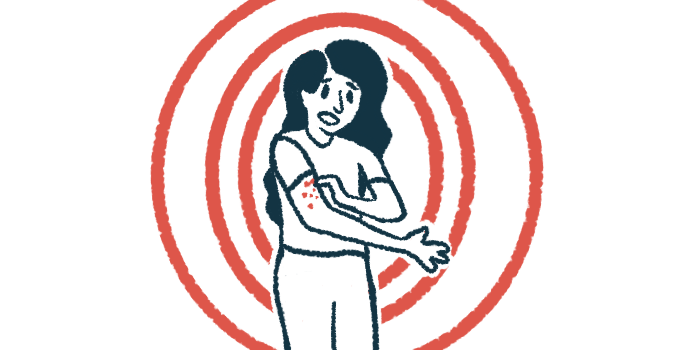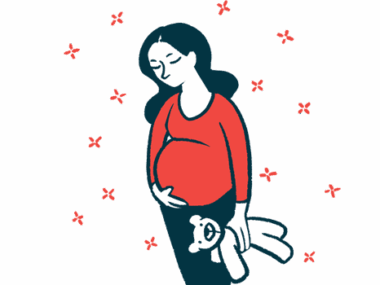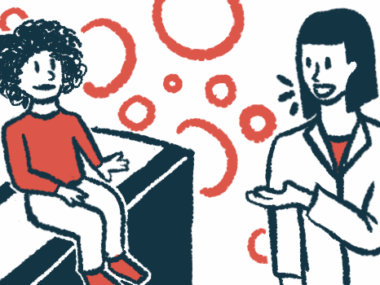Livmarli relieves itch in adolescents with Alagille syndrome: Analysis
Nearly all patients who received Livmarli before age 16 had minimal to no itch
Written by |

Treatment with Livmarli (maralixibat) is effective for relieving itch in adolescents with Alagille syndrome, according to a new analysis of previous clinical trials.
Nearly all patients who received the therapy before age 16 had minimal to no itch, and the effects were maintained into late adolescence or adulthood.
The study, “Maralixibat Reduces Serum Bile Acids and Improves Cholestatic Pruritus in Adolescents With Alagille Syndrome,” was published in Liver International. The work was funded by Mirum Pharmaceuticals, the company that sells Livmarli.
Alagille syndrome is a genetic disorder that’s frequently marked by cholestasis, which refers to slowed flow of bile out of the liver. Bile is a digestive substance normally made in the liver and then transported via certain ducts to the intestines. Stalled bile is prone to spilling out into the bloodstream, which can result in itching (pruritus).
Livmarli approved for cholestasis-related itching in Alagille patients
Livmarli is approved in the U.S. for cholestasis-related itching in Alagille patients 3 months and older. In Europe, the therapy is authorized for Alagille patients 2 months and older. The daily oral therapy works by preventing bile from being reabsorbed in the intestines, increasing its excretion in feces and reducing its levels in the bloodstream, which can relieve itch.
Clinical trials of Livmarli have mainly included patients younger than 12, so its effect in adolescents is less clear. To know more, researchers at the University of Toronto, in Canada, in collaboration with Mirum, analyzed data from 14 adolescents with Alagille syndrome who also participated in those clinical trials.
Most participants had received Livmarli as part of the Phase 2 placebo-controlled trials ITCH (NCT02057692) and IMAGO (NCT01903460) and their subsequent open-label extension studies IMAGINE (NCT02047318) and IMAGINE-II (NCT02117713). Four patients had taken part in the ICONIC Phase 2 trial (NCT02160782).
None of the patients had undergone a liver transplant before starting Livmarli. At the time of the analysis, they had been treated with Livmarli for a median duration of 4.1 years.
Itch severity was measured using the Itch-Reported Outcome (Observer) score, abbreviated ItchRO(Obs). This score rates itching severity on a five-point scale, from zero (no itching) to four (extremely severe itching).
Eleven patients started Livmarli before age 16. When they started the treatment, the median ItchRO(Obs) score was 2.4 points, suggesting fairly substantial itching. After starting Livmarli, the median score decreased to 0.6, suggesting little to no itching for most patients. This reduction was sustained over the years of treatment with Livmarli.
Reduction in itching also observed in patients who started Livmarli after age 16
The other three patients, who started Livmarli after age 16, also reported reductions in ItchRO(Obs) scores. One of them experienced a substantial reduction of 2.8 points, while the other two had reductions of one point or less.
In line with the reduction in itching severity, lab tests showed significant and sustained reductions in blood levels of bile acids after starting Livmarli treatment.
“For those who started [Livmarli] in early adolescence (before age 16), a clinically and statistically meaningful improvement in pruritus and a statistically significant reduction in [blood bile acid levels] were achieved and persisted into late adolescence or adulthood,” the researchers concluded. “Those who started later in adolescence (after age 16) also showed a robust and durable improvement in pruritus like other children from clinical trials.”
Safety data suggested the therapy was well tolerated, with no reported serious side effects related to the medication. The most common side effects were diarrhea and abdominal pain.
The researchers noted this analysis was limited to a small number of patients who all had relatively minimal liver disease, apart from cholestasis-related itching, so the results may not be applicable to patients with more advanced liver disease.
Still, the scientists said the findings collectively “support the potential for [Livmarli] to have a positive impact on adolescents with [Alagille syndrome] who survive with their native livers into adulthood.”








